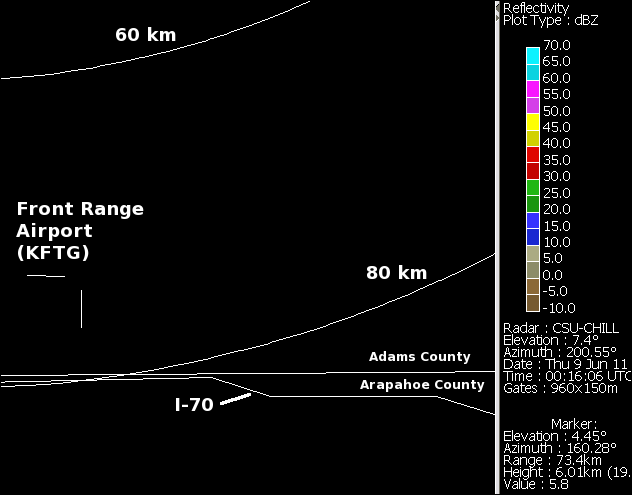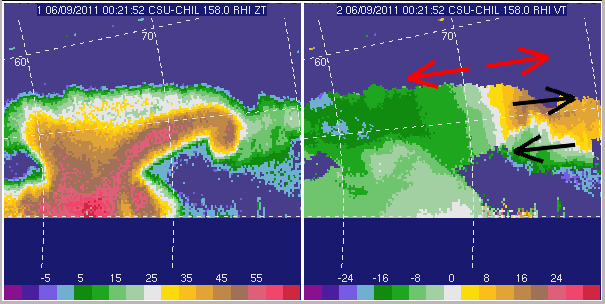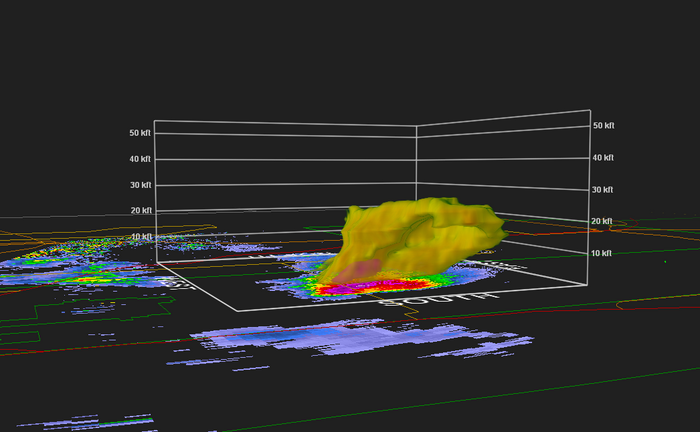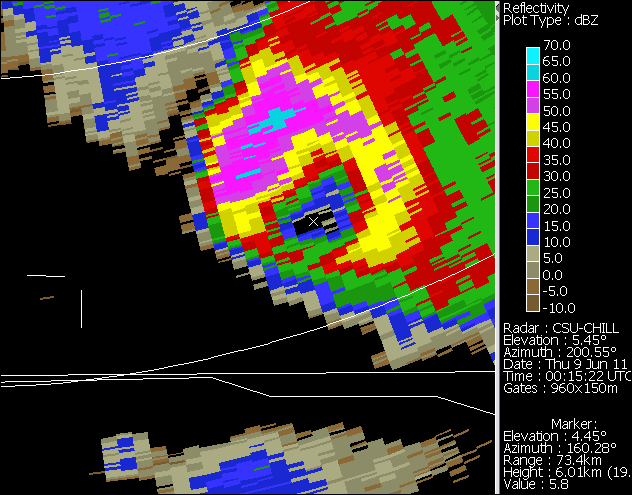Bounded weak echo region (BWER) example: 9 June 2011
Introduction
A marginally severe thunderstorm (one report of soft, one inch diameter hail) was observed during the early evening hours of 8 June 2011 (9 June on UTC). Despite its modest stature and severe weather production, the storm contained a well-defined Bounded Weak Echo Region (BWER). These vertically-oriented weak echo intrusions into the overall thunderstorm echo are associated with relatively strong updrafts. Due to the strong upward motions, the growing hydrometeors are carried to relatively high altitudes before they become large and numerous enough to produce a radar echo (Lemon and Doswell, MWR 1979). The observations reported here were taken when the storm was approximately 70 km southeast of the CSU-CHILL radar. The following base map plot shows some basic geographic and horizontal scaling information:

PPI data from the 0013:33 UTC volume
The first frame in the following plot sequence shows the reflectivity field observed in a PPI sweep done at an elevation angle of ~5 degrees. A cursor cross has been placed in the echo hole associated with the BWER. The second frame contains the reflectivity data from the ~7 degree sweep. At this beam height, the BWER reflectivity minima no longer exists; instead, relatively high reflectivities are found due to the growing hydrometeors that exist at this level in the updraft. (The cursor location is fixed). The third frame shows the radial velocity pattern in the 7 degree PPI sweep. Divergence is clearly indicated in the echo region overlying the BWER updraft. (Clicking the "Forward" button on the control panel is the best way to step through the three images.)
|
|
||
|
RHI data from the 0021:28 UTC volume
The following plot was generated from an RHI scan made on an azimuth of 158 degrees ~5 minutes after the time of the PPI's shown above. Reflectivity is shown in the left panel; the overhanging structure associated with the BWER is evident. The right panel shows radial velocity. Significant changes in the orientation of the zero velocity line are found in the overhang region.

Transparent shading range: 39 to 48 dBZ; internal red core region (near surface heights) starts at 61 dBZ

SPC report at 0032 UTC: 1 inch hail 12 NNE Bennett (soft hail)
